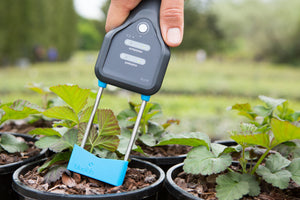Do you have one plant that you are just in love with and want to create replicas of for eternity? Well, lucky you! Cloning may still be controversial when it comes to humans but you can clone your plants at home without getting a sideways stare down.
Why Should I Clone My Plants?
Cloning is also referred to as asexual reproduction and creates genetic copies of the “mother” plant. If you have a particular plant you have grown that is resilient against pests, produces dense flowers, has a high terpene profile and delicious flavor then why would you not want to replicate it over and over again? Propagating your favorite plant is a great way to save money on buying new crops, stabilize your growing environment and grow the true cream of the crop.
So, What is the Best Way to Clone?
Get a cloner. They are inexpensive and pay for themselves over time. Cloners create the perfect environment and are the best way to clone and ensure your clones thrive and grow a strong root system in a shorter amount of time than using soil.
Cloners can hold from six to over 150 plants, depending on your grow goals. Most come equipped with a pump to circulate water and nutrients through the reservoir, misters to maintain a humid environment, and slotted baskets for your preferred growing media. We recommend the EZ-Clone aeroponic cloning system as it mists the roots via the accompanying pump and manifold within the reservoir to give your cuttings the required dosage of water. You can set it and forget it!
Rockwool cubes are the most popular choice among growers because it retains nutrients and moisture for the tender root systems of your clones. It is easy to work with, non-toxic, and inexpensive.
Cloning Step-By-Step Guide:
- Obtain a single-edge razor blade.
- Select a branch to serve as your clone near the top of the plant where there is new growth. The cutting should be about 5-8 inches long. Use your razor to make a clean, single cut.
- Manicure your cutting by removing the smaller branches near the base to expose the stem and allow for more depth when rooting and planting.
- Make a 45-degree angle upward cut underneath the nodes left behind from the lower leaves that you cut off for the most amount of root expulsion. The angled cut exposes more surface area and capillaries allowing the stem to absorb more water and nutrients than if you were to cut straight across.
- Cut the edges of the leaves on your cutting to about 50 percent of their original size. This helps with the transpiration process and prevents the clone from coming in contact with the other plants when using a cloner. The plants touching and layering over one another can enable moisture to hide out in between the leaves and become a breeding ground for mold or fungi.
- Grab one cutting and use your razor to split the end of the stem like a snake’s tongue about half an inch long. Again increasing the surface area for root growth and nutrient uptake. Be very careful to not cut yourself while doing this step.
- Dip the stem in filtered water or a cloning solution and place it in the soil or a cloner. If harvesting numerous cuttings at once, makes sure to put their stems in some water to keep them hydrated until you are ready to move forward.
- Place the prepared cutting into the pre-soaked Rockwool cube and let the cloner go to work for you.
Solutions
There are many different solutions out there that boost root growth and stability. However, some gardeners just dip their clippings in filtered water before placing them in their cloner and see strong, healthy clones as a result. The true-to-organic growers dip their clippings in undiluted aloe vera gel (the real stuff, not that green fake goo for sunburns). Aloe vera is rich in minerals and nutrients that promote growth.
We recommend using an Azos solution that contains the most commonly used Azospirillum brasilense bacteria to ramp up the root growth rates of your clones. Combine four tablespoons of Azos with one gallon of 6.0 pH water (or filtered water) and use this solution to soak your growing media in (i.e. Rockwool, plugs, or coco pellets). Soak the media for at least 10 minutes while you prepare a one-part Azos to two-part water for your root-soaking solution. Soak your plant roots for about 15 seconds before placing them in the growing medium and placing them in the cloner.
Lights
No need to spend a lot on lights for your clones. Clones require a lot less light energy than your maturing plants. The team at Way to Grow recommends using the Luxx LED Clone strips to expose your plants to a small amount of UV light in preparation for transferring to more intense lighting as they move into the veg phase. These LED light strips are the perfect replacement for a T5 fluorescent light fixture. The Luxx 18w Clone LED is 30% more efficient running off 18 watts, is fully waterproof, and is rated for 54,000 hours.
Clones are much more sensitive and tender than mature plants. In addition to being hypersensitive to pathogens, they are also sensitive to light. Keep your lights a good 5 to 6 feet away from the canopy to avoid heat burn and frying your plants to death.
The More You Know, The Better You Grow
Cloning is one of the many ways to create a stronger growing environment for your plants. It can save you money in the long run of your grow and is less risky than growing from seed. Growing is an art form and every grower does it differently. You will find that different methods will work better for different strains and plants. We encourage you to play around with the different available options and offer your feedback below!
